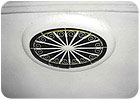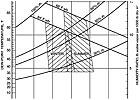
FIGURE 1. An example of a decorative ceiling grille.
The aesthetic aftermath of a heating system upgrade … placement of air returns for an unusually shaped space … noise levels … making economical but smart choices for an organization on a tight budget – these are issues that come into play for places of worship. Take a few lessons from the author, and earn praise instead of prayers for a better system.
For every house of worship, design consideration must be given to gather information that represents the congregations’ priorities. Their basic wishes are to be warm in the winter, cool in the summer, and within their budget. It is important to discuss the other priorities for the mechanical system design at the beginning of the process. Here are some typical priorities.
• Aesthetics
• Occupant comfort
• Initial and life cycle costs
• Energy efficiency/payback
• Maintainability/operability
• Noise level/acoustics
Beauty Or The Beast
The mechanical HVAC system must be designed to complement the visual aspects of the architectural design. This visual aspect is important when the project is a remodel of an existing facility. Air supply outlets and return air inlets cannot just be placed in the traditional locations that they would be in a new design. Buildings that were constructed before the days of air conditioning traditionally used decorative ceiling grilles for ventilation (Figure 1). These outlets can be reused if consideration is given for outlet velocities.Many older buildings used steam heat through cast iron radiators. As the facility is remodeled, a hot water heating system generally replaces the steam heating system. The question is often raised, can we get rid of the cast iron radiators, or do we keep them for the “historic” look? The radiators can be retained and the visual part covered with wood or metal grilles.
Modern worship facilities often have design material features that do not match very well with metal diffusers or grilles. The air terminal outlets are selected to be in the ceiling, the sidewall (soffit), or the floor. The challenge is often to make the mechanical air outlets invisible. Wood grilles can be incorporated into wood beams, or a supply duct can be run in a soffit with the airflow directed toward the sloped roof line. These types of air outlets truly almost become invisible. Hydronic heating and cooling systems can be the radiant type. The radiant surface for heating can be a floor grid or ceiling panels. The radiant surface for cooling is ceiling panels.
Any visible rooftop equipment should be painted to blend in with the color of the background construction material. This technique is more cost effective and more durable than screen enclosures. Always consider adding factory-installed hail guards to cover the condensing coils on rooftop air handlers and air cooled chillers. These screens improve the visual aspects of the units.
Let's Not Blow Them Over
Supply air systems diffuse the air at the ceiling, throw the air from sidewall grilles, dump the air from decorative ceiling outlets, or blow the air from perimeter floor grilles. All of these choices potentially cause occupant discomfort if consideration is not given to discharge temperature and air velocity in the occupied zone. Space design temperature should be in the middle range of occupant comfort for both male and female occupants with little variation between summer-winter conditions, 74°F, 50% rh (Figure 2). Outdoor air ventilation amounts can vary between three traditional choices: not occupied, small occupancy, and full occupancy with the control signal input based on the CO2monitored in the return air.Zone temperature control should be considered for the seating areas, the altar, and the choir area. Other auxiliary rooms should also be individually controlled.
Heat gain is primarily from the lighting and the occupants. Auxiliary heating is required for buildings in the northern climates for the unoccupied mode. This heat is supplied at the entrances and around the perimeter. A heating system can be a hydronic type or a heated air delivery system. Radiant heating ceiling panels offer minor visual intrusion and can complement the ceiling look.
Cooling and ventilation air should be provided to the level of the occupants. The occupants create a rising thermal plume (85 fpm) from the seating area toward the high ceiling. Ceiling diffusers mix the supply air with the thermal plume. However, to successfully deliver the mixed air to the occupants, higher jet velocities are required. These higher jet velocities create an unacceptable noise level. Sidewall grilles or registers blow or throw the supply air toward the occupant zone while passing through the rising heat plume. The terminal velocity at the occupant level should not exceed 100 fpm.
The location of the return air opening is used to help direct the flow of the comfort air. Comfort air is the blending of the cool supply air mixing with the rising thermal plume, and the result is tempered air passing through the occupied zone on its way to the return air opening. High returns capture heat that rises to the high point. Low returns capture the cool air near the floor.
In northern heating systems, the returns should be low to help draw the heat down into the occupied zone (Figure 3). In southern cooling systems, the returns should also be low to help draw the cool air down into the occupied zone. High ceiling returns are applicable when the cool air is supplied low as from floor grilles.
A Penny Saved Can Be A Dollar Short
A place of worship can be classed as an “institution;” therefore, the building systems should be planned to last a long time. The selection of an HVAC system must also partner with the visual aspects of the facility. Grilles, registers, diffusers, wall-mounted radiation, cabinet unit heaters, and radiant panels all can be located, with some thought, to blend in or complement the architectural message.Gas heating, combined with direct expansion constant volume air systems, are the most basic economic choice. Multiple units with variable step capacity are the next cost step above simple constant volume air systems. Hydronic and chilled water systems again raise the cost step to a higher initial cost, but they provide control methods that vary the output and can shift the heating/cooling capacity into other spaces in the complex. The piped fluid capacity can be shifted from the worship area into classroom spaces and administrative areas that are used on different days and times.

FIGURE 2. Acceptable ranges of operative temperatures and humidity. (Table courtesy of 2005 ASHRAE Handbook-Fundamentals. ©American Society of Heating, Refrigerating and Air-Conditioning Engineers, Inc., www.ashrae.org.)
Putting Money In The Collection
Everyone is concerned about controlling their energy bills. The mechanical systems in these types of facilities use energy to heat, cool, ventilate, and to provide a source of domestic hot water. All these systems have variable loads based on occupant usage. The control methods that shift the heating and cooling capacity from one space to another will control the basic energy bills. However, the initial cost rises and the operational control options may exceed the abilities of the maintenance staff.Precooling of worship space is a control option at the expense of occupant thermal comfort when the services begin. Another option for a chilled water system is the use of thermal storage. This option requires an off peak utility billing rate structure that allows chilled water to be produced at a lower cost and stored for peak usage. A utility rebate is often available to help offset the cost of the thermal storage tank.
Payback analysis should keep the maximum payback choices within about half of the equipment life of the systems.
The KISS Principle Applies
A basic rule to follow when selecting a mechanical system is to consider how much time, effort and financial resources it will take to maintain the equipment selected. A choice of who maintains the system is either between an in-house staff or a contracted service group. A client-instituted call for service is more economical than having the maintenance performed whenever the contractor shows up. Another simple rule of maintenance is to clean what is dirty and fix what is broken.The operational choices should not be above the level of knowledge of the staff that runs the facility. Keep the choices simple and any programmable features obtainable with limited control knowledge.

FIGURE 3. An example of a low floor return grille.
Silence May Not Be Golden
The fan and pump noise from equipment located in the mechanical rooms must have traditional selections of velocity and vibration isolation features. In addition to these items, consideration must be given to the terminal outlet velocity noise and the return air path noise. Avoid the use of duct lining because it can trap dirt and moisture, resulting in mold problems. Duct paths should not include any sharp turns in direction that will result in velocity turbulence noise.Duct sound attenuators are very costly and take up valuable space. Through careful duct velocity selection, duct noise will not occur. A level of air duct background noise is acceptable as a source of masking noise to block out the bothersome noise of the space occupants actions: moving, coughing, etc.
A/C condensing units should be located away from door and window openings that would provide an objectionable noise path to the interior spaces.
